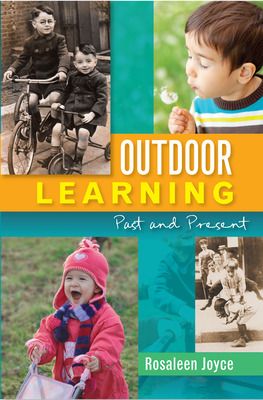Outdoor Learning: Past and Present
1st Edition
0335243029
·
9780335243020
© 2012 | Published: February 16, 2012
The book breaks new ground by placing 'outdoor learning' in a theoretical, historical and social context of changing understandings of children, childhood and the use of the outdoors. The books approach is based on the premise that ideas phase in and…
Read More
Request More Info
After you purchase your eBook, you will need to download VitalSource Bookshelf, a free app or desktop version here. Then login or create an account and enter the code from your order confirmation email to access your eBook.
- Access the eBook anytime, anywhere: online or offline
- Create notes, flashcards and make annotations while you study
- Full searchable content: quickly find the answers you are looking for
Introduction
Outdoor learning in the historical context of childhood 1500- the present
Born to be educated: John Amos Comenius (1592-1670)
Born to learn: Johan Heinrich Pestalozzi (1746-1827)
Born to do: Friedrich Froebel (1782-1852) His inheritance
Born to breathe: Margaret McMillan (1860-1931)
Born to learn in nature: Gösta Frohm in Sweden (1908-1999)
Born to be free: Forest Schools in the UK (1950’s - present)
Conclusion
Outdoor learning in the historical context of childhood 1500- the present
Born to be educated: John Amos Comenius (1592-1670)
Born to learn: Johan Heinrich Pestalozzi (1746-1827)
Born to do: Friedrich Froebel (1782-1852) His inheritance
Born to breathe: Margaret McMillan (1860-1931)
Born to learn in nature: Gösta Frohm in Sweden (1908-1999)
Born to be free: Forest Schools in the UK (1950’s - present)
Conclusion
The book breaks new ground by placing 'outdoor learning' in a theoretical, historical and social context of changing understandings of children, childhood and the use of the outdoors. The books approach is based on the premise that ideas phase in and out of use depending on social and political contexts. This perspective will help people to think about how present day attitudes regarding outdoor learning came to be, where they came from and to question their 'newness'.
The author argues that outdoor learning needs to be looked at in a historical context so that you can understand the contribution of previous educational thinkers on today's views and practices. The main historical thinkers considered include Comenius, Pestalozzi, Froebel, and Margaret McMillan as well as the views of more modern contributors and the Forest Schools in the UK.
Joyce makes it possible to look more critically at today's approaches and influences on outdoor learning. She considers how children are regarded today within these approaches and whether these constructs are in the children's best interests.
Key features of this book include:
A reflective approach to practice Effective training for practitioners in their use of the outdoors - recognising the different approaches required from those used in the indoor classroom.This book is essential reading for all early years practitioners.

